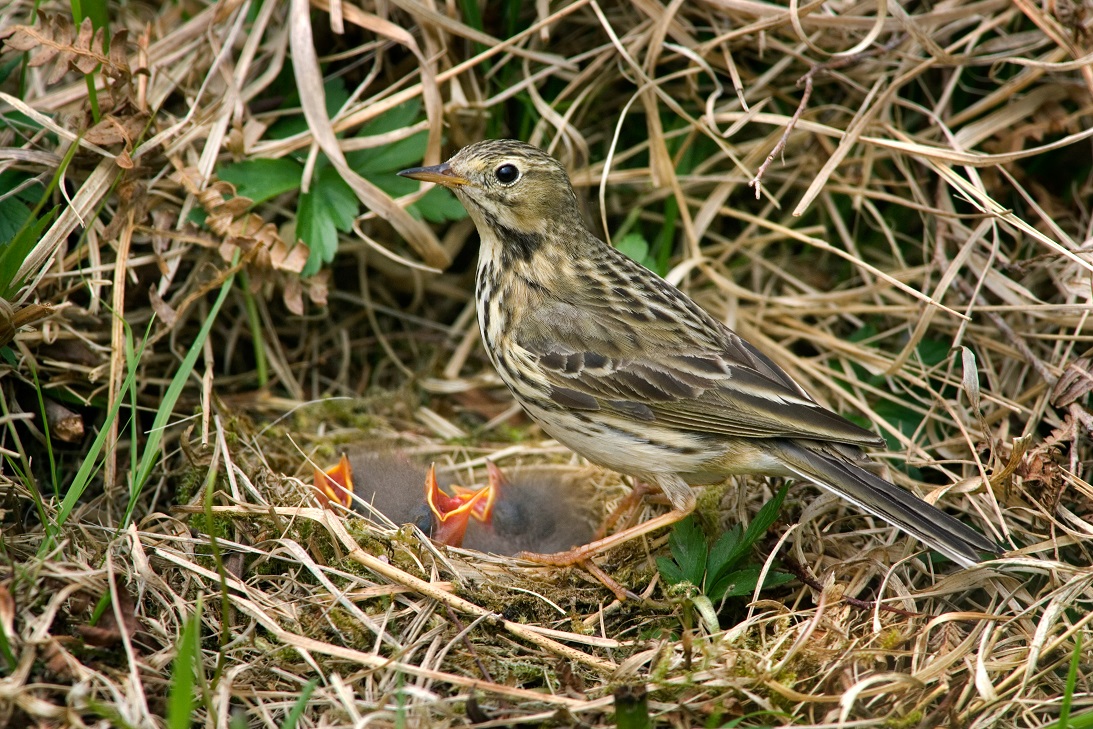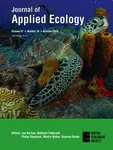BTO publishes peer-reviewed papers in a wide range of scientific journals, both independently and with our partners. If you are unable to access a scientific paper by a BTO author, please contact us.
Search settings
Can microclimate offer refuge to an upland bird species under climate change?
Author: Massimino, D., Beale, C. M., Suggitt, A. J., Crick, H. Q. P., Macgregor, N. A., Carroll, M. J., Maclean, I. M. D. & Pearce-Higgins, J. W.
Published: 2020
Climate change is now widely recognised as having a large impact on biodiversity, affecting species distributions at a large spatial scale. Previous BTO research has demonstrated a change in species’ ranges within Britain, with a shift northwards and, less frequently, towards higher altitudes. However, the importance of a species’ microclimate – the climate experienced by individual animals, which may be at a scale of metres or smaller – and changes is not well understood.New research led by the BTO has used data collected by volunteers taking part in the Breeding Bird Survey (BBS) to investigate the effect of microclimate on Meadow Pipits, a globally Red-listed, declining species with important populations concentrated in northern and western upland parts of the UK. Although it was already known that Meadow Pipits are more likely to be found on wet, cool, high-altitude slopes, this work quantified how strongly the species is associated to these locations. Crucially, the analyses also showed that microclimates which are typical of these locations have an even stronger influence on the Meadow Pipit presence than larger-scale (macro) climate has. This is probably linked to the abundance of their cranefly prey, which is positively associated with soil moisture and negatively associated with high summer temperatures.The importance of these analyses goes well beyond a statistical exercise. With increasing temperatures, the British macroclimate will become progressively unsuitable for this, and other, upland bird species. At lower elevations and latitudes, wet and northerly exposed slopes could become refuges where Meadow Pipits are able to persist, in a similar way to glacial relict species which only survive in enclaves surrounded by otherwise unsuitable environment. Understanding the importance of microclimate for Meadow Pipits and similar upland species has therefore strong implications for species’ conservation in the face of ongoing large scale climate change. Refuges consisting of areas of suitable microclimate could become the future focus for the conservation and protection of cold-adapted species that will be rapidly losing large areas with suitable macroclimate. This study of the humble Meadow Pipit not only adds to the evidence required to inform conservation in the UK, but by highlighting the importance of microclimate, is also relevant to the future conservation of many other mountain bird species around the world that are threatened by climate change.
18.07.20
Papers

Roads as a contributor to landscape-scale variation in bird communities
Author: Cooke, S.C., Balmford, A., Donald, P.F., Newson, S.E. & Johnston, A.
Published: 2020
07.07.20
Papers
Breeding bird communities within a parkland-woodland continuum: the distinctiveness of wood-pasture
Author: Fuller, R.J. & Green, T.
Published: 2020
12.06.20
Papers
Livestock grazing impacts components of the breeding productivity of a common upland insectivorous passerine: Results from a long‐term experiment
Author: Malm, L.E., Pearce‐Higgins, J.W., Littlewood, N.A., Karley, A.J., Karaszewska, E., Jaques, R., Pakeman, R.J., Redpath, S.M. & Evans, D.M.
Published: 2020
01.06.20
Papers
Evaluating the potential for bird‐habitat models to support biodiversity‐friendly urban planning
Author: Plummer, K.E., Gillings, S. & Siriwardena, G.M.
Published: 2020
This BTO study modelled the abundance of breeding birds within built-up areas, exploring how this varied in relation to the characteristics of these urban environments. It highlighted the potential of an evidence-based – and spatially explicit – evaluation of urban development impacts on biodiversity, by predicting the consequences for bird numbers.
01.06.20
Papers
